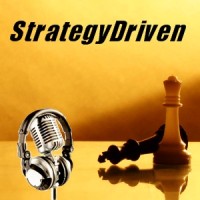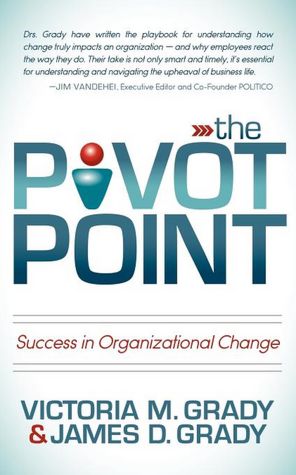Resistance to Guidance: Why Sales, Coaching, and Leadership Practices Falter
Do you know what’s stopping you or your company from making the changes necessary to have more success? Or why prospects aren’t buying something they need? Or why clients aren’t adopting the changes they seek? The problem is resistance. And as change agents we’re inadvertently creating it.
Change requires that a complacent status quo risk its comfort for something unknowable – the probable loss of narrative, expectations, habitual activities and assumptions with no real knowledge of what will take its place. People don’t fear the change; they fear the disruption.
The Status Quo of the System
To understand why our status quo is tenacious we must understand systems. Simply, a system – for the sake of this article families, corporations, or individuals – is:
- a collection of policies, beliefs, agreements, goals and history, uniquely developed over time, which
- embrace uniform rules that are
- recognized and accepted by all and
- constitute the foundation of all decisions.
Because of the law of homeostasis (simply, all systems seek stability) any change potentially disrupts the status quo and will be resisted, even if the ‘new’ is more effective; even if the system seeks the change; even if the persuader is skilled at persuasion tactics.
Until or unless a system is able to shift its rules so that the new product, idea or implementation has the ability to fit in and new rules are adopted that reconfigure the status quo from within, change faces an uphill battle. The system is sacrosanct.
To get folks to change their minds or accept a solution and avoid resistance, it’s necessary to first:
- help the system discover the differences between the new and the old,
- help the system discover the details of the risk,
- facilitate an acceptable route to managing the risk,
- facilitate buy-in from the right people/elements
regardless of the efficacy of the proposed change or the need.
Our Guidance Pushes Against Stable Systems
Entire fields ignore these change management issues to their detriment:
- the sales model fails 95% of the time because it attempts to push a new solution into the existing status quo, without first facilitating a buyer’s non-need change issues;
- coaches end up needing 6 months with clients to effect change as they keep trying to push new behaviors into an old system – and then blame clients for not listening’ or believing they have the ‘wrong’ clients;
- consultants and leaders have a high rate of failed implementations as they attempt to push the new into the old without first collaboratively designing new structures that will accept the change.
Persuasion and manipulation tactics and guidance strategies merely push against a stable system. As outsiders, it’s unlikely we can acquire the historic knowledge and consensus from all relevant insiders, or design the new rules for systemic change, for our ideas or solutions to gain broad acceptance throughout the system.
We can, however, facilitate the system in changing itself. Then the choice of the best solution becomes a consequence of a system that is ready, willing, and able to adopt excellence.
Obviously, having the right solution does not cause change: pitching, suggesting, influencing, or presenting before a system has figured out how to manage change is not only a time waste, but causes resistance and rejection of the proposed solution. So all of our logic, rational, good content, reasoning, or persuasion tactics are useless until the system is ready. Facilitate change first, then offer solutions in the way that the system can use it.
The question is: do you want to place a solution? Or expedite congruent change?
Listening for Systems, Facilitating Change
For the past 30 years I have designed unique models that facilitate change from the inside. Used in sales, and now being used in the coaching industry, my Buying Facilitation® model offers a unique skill set that teaches systems how to change themselves, and includes listening for systems rather than content, and a new way to use questions (Read Dirty Little Secrets (www.dirtylittlesecretsbook.com.).But whether you use my model or develop one of your own, you must begin by facilitating change, not by attempting to first ‘understand need’ or place a solution or idea.
I’m suggesting that you change your accustomed practices: the idea of no longer listening for holes in a client’s logic to offer guidance goes against the grain of sellers, coaches, and consultants. By listening for systems, by focusing on facilitating change and enabling consensus and change management, change agents are more likely to sell, coach, and implement.
I’ve written a new book (What?) to help you hear what others are really saying rather than just what you want to hear. I’ve made it free: www.didihearyou.com. Read it, and then let’s start a conversation. Let’s begin to think of managers, sellers, leaders, and coaches as true consultants who can hear what their clients mean. Let’s add a few facilitation skills and be the agents of real change with integrity.
About the Author

and Dirty Little Secrets: Why buyers can’t buy and sellers can’t sell and what you can do about it
.
To contact Sharon Drew at [email protected] or go to www.didihearyou.com to choose your favorite digital site to download your free book.

 StrategyDriven Podcasts focus on the tools and techniques executives and managers can use to improve their organization’s alignment and accountability to ultimately achieve superior results. These podcasts elaborate on the best practice and warning flag articles on the StrategyDriven website.
StrategyDriven Podcasts focus on the tools and techniques executives and managers can use to improve their organization’s alignment and accountability to ultimately achieve superior results. These podcasts elaborate on the best practice and warning flag articles on the StrategyDriven website.
 Victoria Grady, author of
Victoria Grady, author of  Phil Cooke is a television producer and media consultant at Cooke Pictures in Burbank, California. His new book is ‘Jolt! Get the Jump on a World That’s Constantly Changing.‘. Find out more at
Phil Cooke is a television producer and media consultant at Cooke Pictures in Burbank, California. His new book is ‘Jolt! Get the Jump on a World That’s Constantly Changing.‘. Find out more at